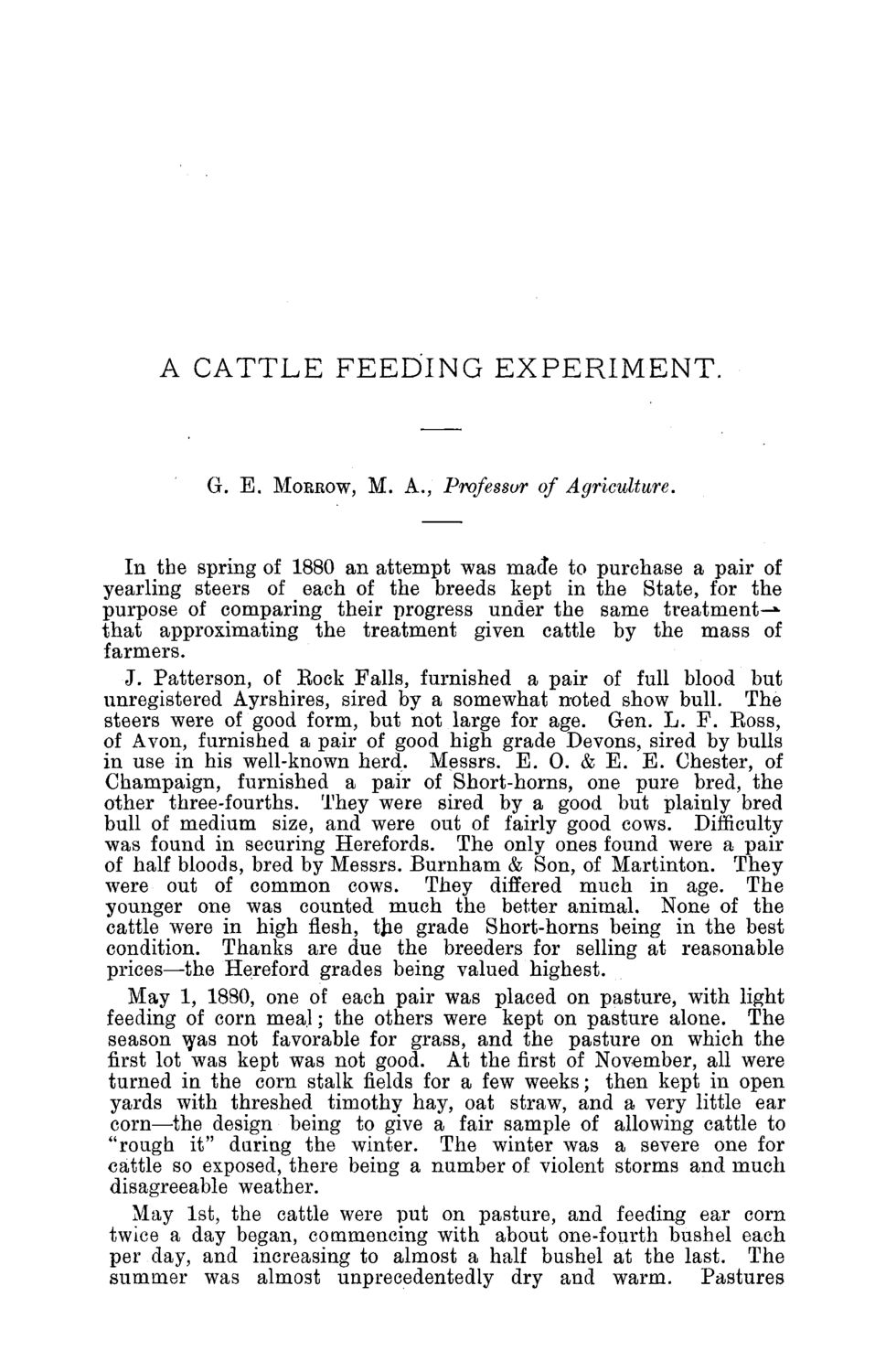| |
| |
Caption: Board of Trustees Minutes - 1882
This is a reduced-resolution page image for fast online browsing.

EXTRACTED TEXT FROM PAGE:
A CATTLE FEEDING EXPERIMENT. G. E. MORROW, M. A., Professor of Agriculture. In the spring of 1880 an attempt was made to purchase a pair of yearling steers of each of the breeds kept in the State, for the purpose of comparing their progress under the same treatment—»• that approximating the treatment given cattle by the mass of farmers. J . Patterson, of Eock Falls, furnished a pair of full blood but unregistered Ayrshires, sired by a somewhat noted show bull. The steers were of good form, but not large for age. Gen. L. F . Eoss, of Avon, furnished a pair of good high grade Devons, sired by bulls in use in his well-known herd. Messrs. E. 0 . & E. E. Chester, of Champaign, furnished a pair of Short-horns, one pure bred, the other three-fourths. They were sired by a good but plainly bred bull of medium size, and were out of fairly good cows. Difficulty was found in securing Herefords. The only ones found were a pair of half bloods, bred by Messrs. Burnham & Son, of Martinton. They were out of common cows. They differed much in age. The younger one was counted much the better animal. None of the cattle were in high flesh, tjae grade Short-horns being in the best condition. Thanks are due the breeders for selling at reasonable prices—the Hereford grades being valued highest. May 1, 1880, one of each pair was placed on pasture, with light feeding of corn meal; the others were kept on pasture alone. The season was not favorable for grass, and the pasture on which the first lot was kept was not good. At the first of November, all were turned in the corn stalk fields for a few weeks; then kept in open yards with threshed timothy hay, oat straw, and a very little ear corn—the design being to give a fair sample of allowing cattle to "rough it" daring the winter. The winter was a severe one for cattle so exposed, there being a number of violent storms and much disagreeable weather. May 1st, the cattle were put on pasture, and feeding ear corn twice a day began, commencing with about one-fourth bushel each per day, and increasing to almost a half bushel at the last. The summer was almost unprecedentedly dry and warm. Pastures
| |